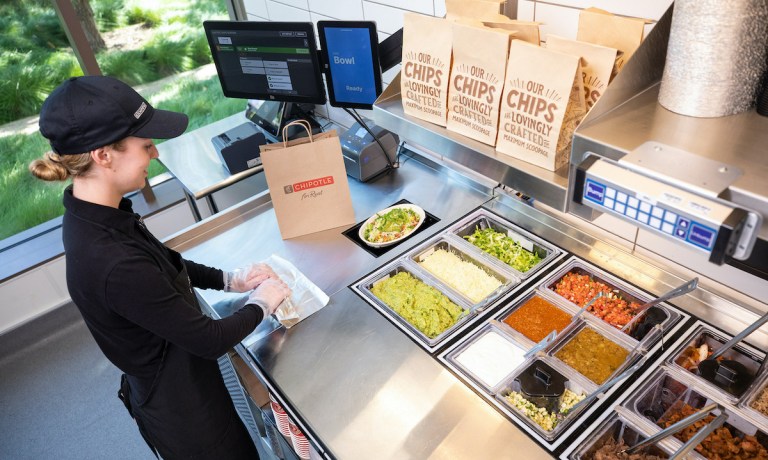Chipotle and Hyphen Team to Test Robot Food Prep

Chipotle wants to test whether robots can prepare its burrito bowls and salads.
The fast casual chain announced Tuesday (Oct. 3) it had teamed with automated food service platform Hyphen to test a “cobotic” (short for “cooperative robotics”) “digital makeline.”
“Approximately 65% of all Chipotle digital orders are bowls or salads, so the cobotic digital makeline has the potential to free up more time for employees to service the front makeline and deliver exceptional hospitality, while simultaneously increasing capacity for digital orders during peak periods,” the company said in a news release.
According to the release, the test involves an automated system that moves entrées through the bottom makeline that automatically dispenses ingredients for the order. Meanwhile, a Chipotle worker can use the top makeline to create burritos, tacos, quesadillas, and kids’ meals for the same digital order.
The company says the makeline can improve the guest experience by helping ensure digital orders are accurate.
“Our goal is to have the automated digital makeline be the centerpiece of all our restaurants’ digital kitchens,” said Curt Garner, Chipotle’s chief customer and technology officer.
PYMNTS spoke with Garner earlier this year following an earlier Chipotle partnership, this one with food automation company Vebu to test an avocado processing robot for guacamole, dubbed Autocado.
“We see opportunities for more automation in food prep and dish washing,” Garner said. “These are areas that consistently come up in conversations with crew members. … We see potential in leveraging AI [artificial intelligence] to help our managers be more precise in the amount of food they’re prepping for their restaurants. Anything we can do to help our teams more easily recover from a strong sales day is an area we’re prioritizing.”
Data cited the PYMNTS/Ingo Money collaboration “Inflation Makes Technology Table Stakes for Restaurants” shows that 75% of restaurant operators plan to adopt technology this year to address labor and cost challenges, while 90% of restaurant owners view increased back-of-house automation as a key to freeing up time to focus on more important tasks.
However, when customers become aware of back-of-house automation, it could pose challenges for loyalty. That’s according to research from PYMNTS’ new exclusive study “Connected Dining: The Robot Will Take Your Order Now,” which found that two-thirds of diners are uninterested in robotics or automated systems preparing or cooking food.